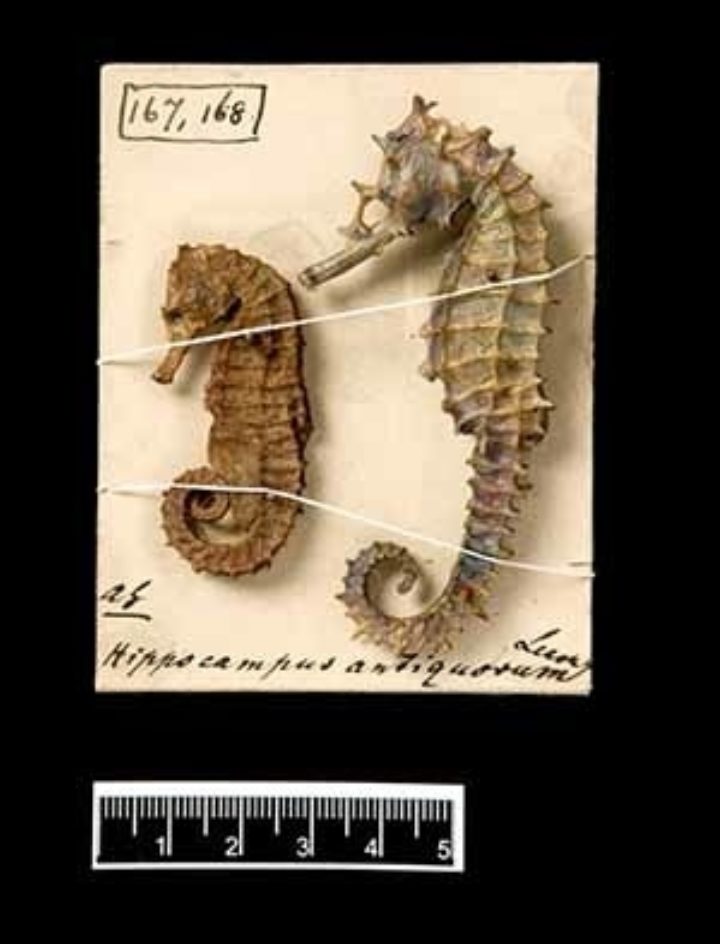18th March 2015: The Linnean Sea-horses
Published on 18th March 2015
The Linnean Sea-horses

In 1758, Carl Linnaeus became the first person to officially describe a seahorse and named it Syngnathus hippocampus (“hippocampus “meaning “horse-like sea-creature”). He based his description upon his own examinations (possibly using one or both of the specimens above) and also those of others, such as Peter Artedi, another Swedish naturalist sometimes called the father of ichthyology. The specimens above (both re-labelled as Hippocampus antiquorum, a synonym) from his collection are actually different species from very different localities and this, together with his variable description, has had some considerable consequences for seahorse taxonomy.
The story of Syngnathus hippocampus (now Hippocampus hippocampus, a genus change to separate the seahorses from the pipefishes) illustrates how complicated and subjective naming organisms can be. There is continuing debate about which fish species Linnaeus was referring to, and if the description was based on these specimens or others. For more than 80 years Hippocampus hippocampus was considered to be the correct name for the “short-snouted seahorse” but in 2007 a researcher revised this to suggest instead the “long-snouted seahorse”, but there is still heated disagreement. So if you find one, of either snout size, what you call it now depends entirely on who you believe!
Seahorses are incredibly interesting fishes. One particularly endearing feature is that seahorse courtship can involve hours of synchronised dancing together. Once two seahorses have decided to mate the female begins to pass her eggs to the male, which he fertilises and stores in a pouch which swells as the young develop, so in effect he becomes pregnant. If you look again at the specimens you can see that the seahorse on the left still has the remains of a brood pouch and is therefore male (Linnaeus, presumably unaware of this behaviour, had thought that it was female).
James Maclaine, Curator, Fish Section, Department of Life Sciences, Natural History Museum, London. A full-length article by James Maclaine about “Hippocampus hippocampus: The saga of the short-snouted seahorse” has just been published in the current issue of PuLSe
